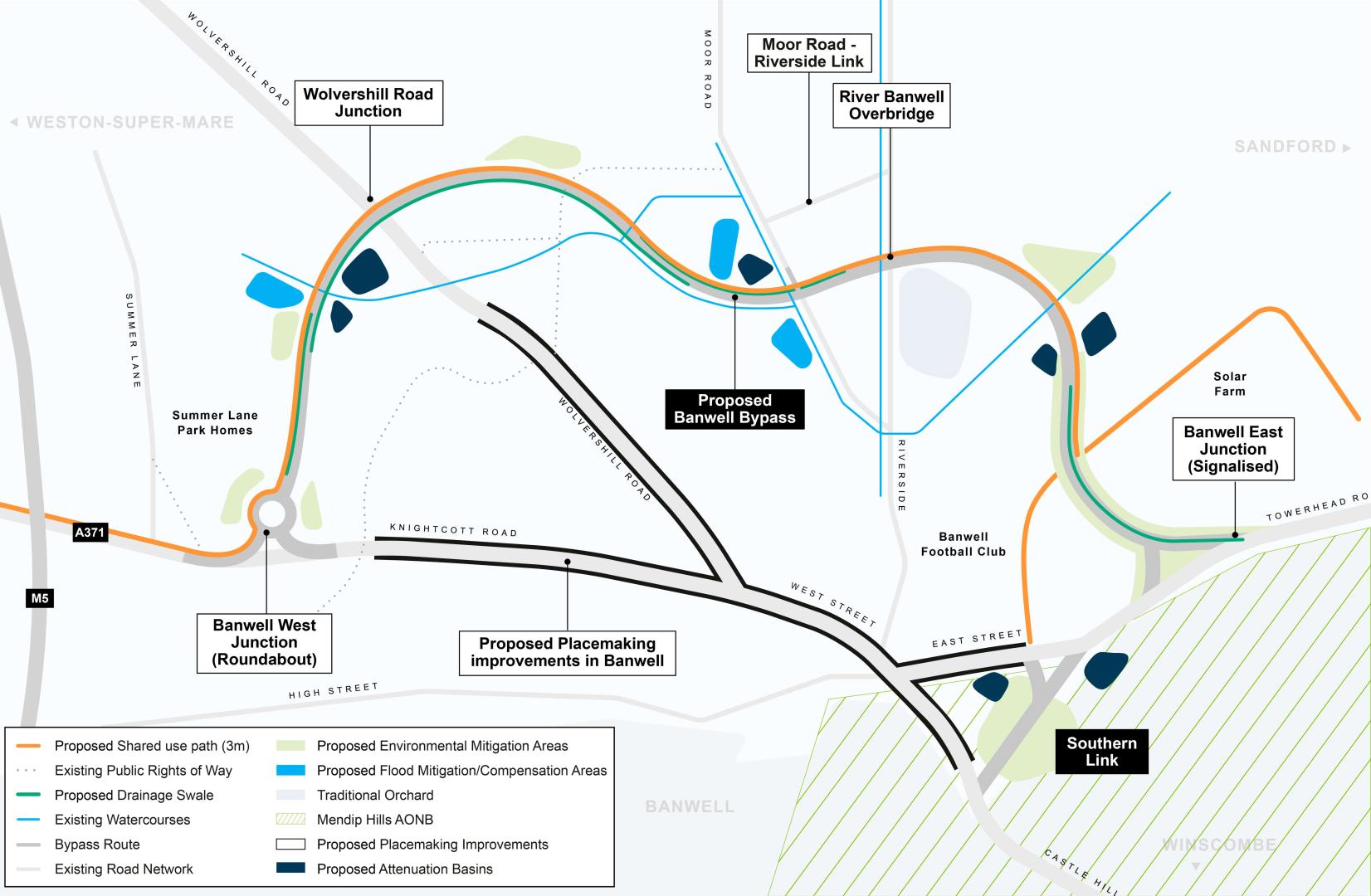Mainly funded through Homes England’s Housing Infrastructure Fund (HIF), the bypass is set to run north of Banwell village. It will remove traffic congestion from a pinch point on a key route between the A38 and Weston-super-Mare.
In addition to the new bypass, planning permission includes:
- new routes for walkers, cyclists and horse riders - giving residents more choice over how they travel
- placemaking proposals for Banwell - to enhance its historic character and village feel
- measures to reduce environmental impacts of the bypass and its effect on nearby villages
- protection of local habitats for species of otters, badger and bats, including the creation of new ponds, woodland and wetlands to achieve a bio-diversity net gain of over 40%.
The scheme will also deliver infrastructure to enable future housing development, subject to the new Local Plan.

